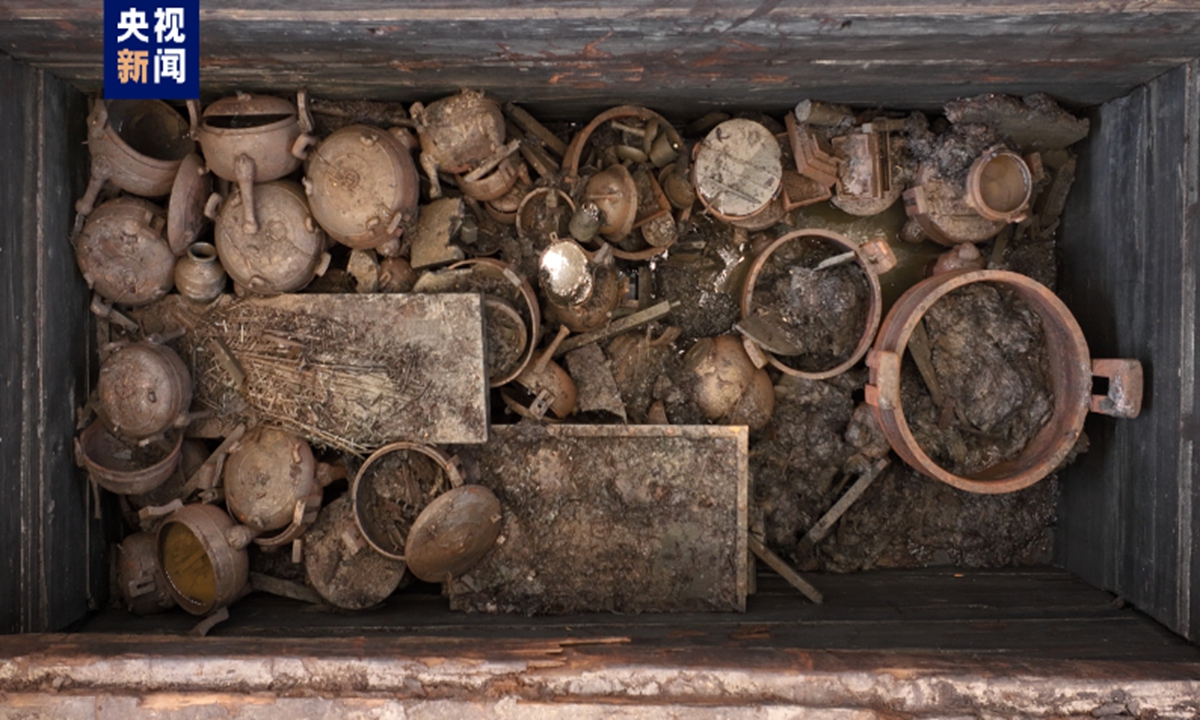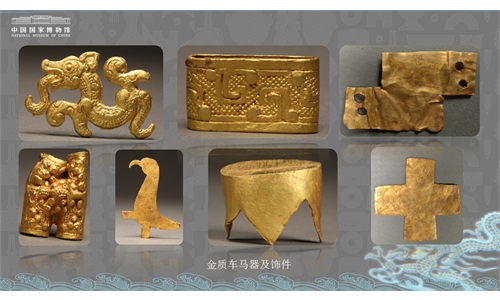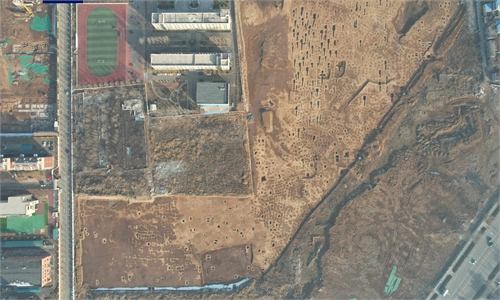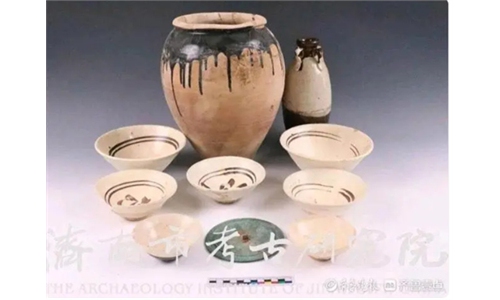ARTS / CULTURE & LEISURE
2,200-year-old Chu state tomb, largest of its kind, unearthed in China

Part of artifacts unearthed from the tomb complex Photo: CCTV
The National Cultural Heritage Administration (NCHA) on Tuesday revealed details on the largest, highest-level, and most structurally complex tomb from the ancient state of Chu ever unearthed.
Located in the city of Huainan, East China's Anhui Province, the 2,200-year-old Wuwangdun tomb has yielded more than 1,000 artifacts, including bronze wares, daily utensils, lacquerware artifacts, musical instruments and figurines.
Based on the grandeur and scale of the tomb as well as historical records, archaeologists speculate that the owner of the tomb might have been King Kaolie of Chu, the Global Times learned from Anhui Provincial Cultural Relics and Archaeology Institute.
However, a more accurate determination of the tomb's occupant will require further extraction of artifacts and analyses of textual evidence.
Meanwhile, the tomb had been looted multiple times throughout history. In 2019, the NCHA approved Anhui to carry out salvage archaeological excavation of the tomb. A year later, the excavation work officially started and was listed as a national project, which aims to trace the origins of Chinese civilization through archaeological endeavors.
Spanning an area of more than 140 square kilometers, the Wuwangdun tomb complex houses a main burial chamber (Tomb No.1), chariot and horse pits, accompanying graves, and sacrificial pits.
Tomb No.1 is a nearly square, large vertical pit tomb, approximately 50 meters long on each side. On the east side, there is a sloping tomb passage about 42 meters long.
Eight side chambers were discovered around the pit, with a central coffin chamber covered with multiple layers of planks. So far, a total of 443 coffin lid planks and 78 bamboo mats covering the planks have been extracted.
Around 1,000 ink drawn characters were found on the coffin lid planks, indicating the positions and functions of each side chamber.
The NCHA stated that the archaeological team has reinforced and extracted fragile cultural relics such as lacquered wooden objects, which were cleaned and preserved in a laboratory.
Currently, the archaeological team has obtained preliminary data for dating the bamboo mats and coffin lid planks, as well as confirmed the type of wood from which the coffin lid planks were made, the composition of the colored substances on the surface of the lacquerware, and some of the materials and techniques used to make the textiles.
The No.1 tomb dates back to a crucial period when the feudal state system in China was disintegrating and the formation of a unified state was imminent. This archaeological find provides systematic data for studying the historical evolution as well as the formation of centralized authoritarian states and cultures during the Qin and Han periods (221BC-220AD), the Global Times learned from the Anhui provincial cultural relics and archaeology institute.
Notably, outside Tomb No.1, in an independent cemetery covering an area of nearly 1.5 million square meters, traces of a chariot and horse pit, accompanying burials, and sacrificial pits have also been discovered.
The chariot and horse pit, located west of Tomb No.1, measures approximately 148 meters in length from north to south and 14 meters in width from east to west, making it the longest excavated Chu chariot and horse pit.
These discoveries provide systematic archaeological data for studying the high-level tomb system in the Chu state during the late Warring States period (475BC-221BC).
Efforts are underway to preserve the site, with plans to potentially develop it into an archaeological park, the NCHA said.



